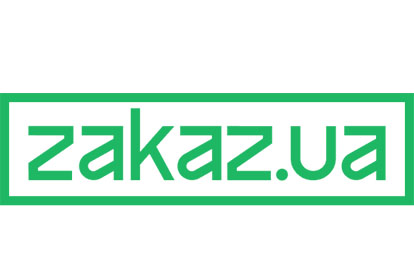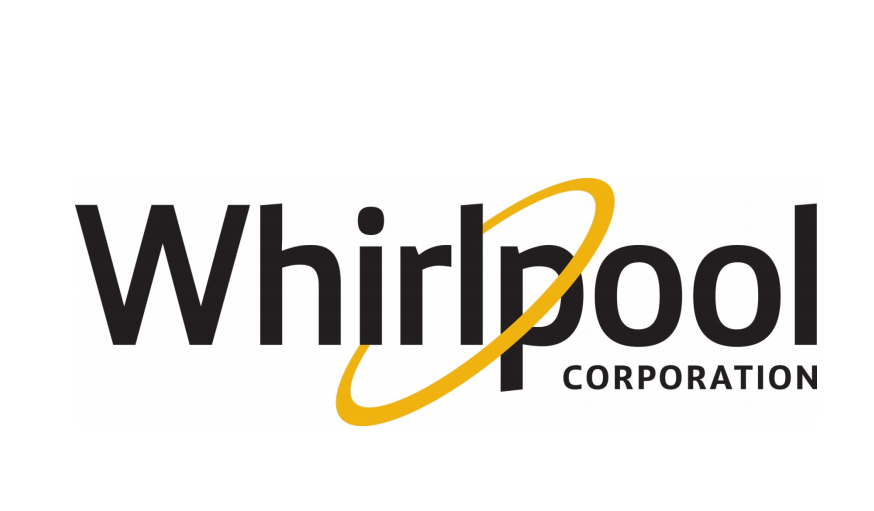Sorting
From A to Z
Deployments found: 4
Description is not ready yet
Description is not ready yet
Salesforce was the first commercially successful business software company built especially for cloud computing. Nearly 20 years after its debut, the Customer Relationship Management (CRM) software company “dominates the market,” as Bloomberg puts it, with 19.6 percent market share in 2017, according to International Data Corporation.
Along with its status as a SaaS industry pioneer, the San Francisco-based company and its CEO Marc Benioff are leaders in corporate philanthropy. The influential Salesforce.org 1-1-1 philanthropic model “has inspired many in the tech community to give back and build charitable models of their own,” says VentureBeat. And Salesforce was recently named number 1 in Fortune’s 2018 list of 100 Best Companies to Work For.
In the fast-changing, highly competitive industry that it helped establish, how does Salesforce maintain its position as a business, philanthropic, and workplace leader? In part, the company’s success is a result of streamlined collaboration, both internally and externally, supported by real-time, easy communication between teams and partners.
As the company grew and expanded its network of offices and partners, it found that its on-premises email system and communication and collaboration tools couldn’t keep pace. Salesforce was able to take advantage of the infrastructure capacity of G Suite, including unlimited email storage, built-in intelligence features like Smart Reply, so that their employees were able to spend less time in their inboxes and more time creating value for their customers.
Initially, Salesforce migrated some users to Google Docs for its real-time document collaboration. Widespread acceptance of Docs led the company to adopt Gmail and Google Calendar followed by the full G Suite. Today, Salesforce's more than 40,000 employees use G Suite app for email, video and team chat, documents, presentations, spreadsheets, and more. "Salesforce employees are participating in over 50,000 Meet calls per day. Five years ago we were 1,000 to 2,000 per day,” says Nick Amido, Director of Infrastructure Engineering.
“Compared to what we were using, the infrastructure capacity of G Suite alone is far superior. People’s email storage capacity used to max out at 250MB, for example. With G Suite, it’s unlimited. That’s huge,” says Tetsu. “And Gmail has built-in intelligence features like Smart Reply, so people spend less time in their inboxes and more time creating value for our customers.”
“The integration between Gmail, Docs, Calendar, Google Drive, and other G Suite apps was another big selling point,” adds Andy White, Senior Director, Infrastructure Engineering. “As a total, real-time collaboration platform, G Suite is impressive.”
Accelerating the pace of collaboration The ease of real-time collaboration enables Salesforce teams to work faster and more effectively. “The speed of business has changed, so the pace of collaboration had to change, too,” says Leandro Perez, Senior Director of Product Marketing. In one example, Leandro cites the amount of time it previously took to finalize marketing materials using Salesforce’s legacy email and productivity software, due to the back-and-forth nature of sharing drafts via email. “With up to several dozen stakeholders in legal, product marketing, and other departments who need to review and comment, getting marketing materials out the door used to take weeks. With Docs, we can create, approve, and deliver assets in as little as 24 hours.”
Collaborating globally in real time Salesforce is headquartered in San Francisco, but has employees and offices around the world, including in the Americas; Europe, Middle East, and Africa; and Asia Pacific. To overcome geographical boundaries, Salesforce teams are heavy users of Google Chat and Google Meet. “A few years ago, we had maybe 200 sessions happening each day,” says Nick Amido, Director of Infrastructure Engineering. “That’s exploded to more than 50,000 a day now.” Corporate Communications team members work with Salesforce presenters on messaging and content and then build the presentations for the company’s many global events. “For our World Tour, we have to prep presenters in Paris, London, Sydney, and other cities,” says Leandro. “We need to interact with many people at once and see their reactions, with everyone simultaneously seeing the same deck in Slides. We couldn’t do any of this without Meet.” The integration between G Suite apps helps team members more effectively collaborate with colleagues and business partners. Salesforce considers external partners essential to its success. When working with a partner on a Slides presentation, Salesforce teams can talk about it with them during a Meet screen share. They might also have a Doc that summarizes all the talking points. “G Suite absolutely breaks down any barriers between us and a partner we’re working with. It makes us all feel like one team, which is ideal for getting the best outcome,” says Leandro.
Knowing you have the latest deck Given the importance of content in strategy, sales, training, and other presentations, it’s essential to trust that the information contained in every deck is final, or is at least the most current version. “When I open a Slides deck to present to a customer, I trust that I have the latest content. Being confident about the information we’re sharing helps us build even stronger relationships with our customers,” says Nick Amido.
Going from hundreds of files to one Salesforce uses Sheets to facilitate collaboration around long-range planning (LRP), variance explanations, and other financial matters. The LRP process used to be extremely complicated, with top-line business projections, headcount estimates, and other data input on different spreadsheets by managers in Salesforce regions around the world. Before Sheets, every time someone made a change to a LRP spreadsheet, he or she created a new version, so there would end up being a long trail. Within a few months, there might be hundreds of versions, which was understandably frustrating and challenging for managers. And though the Finance team kept the files in a shared network folder, only one person could edit a file at a time in the legacy on-premises spreadsheet application “With Sheets, there’s only one version of a spreadsheet, which greatly reduces complexity and speeds up collaboration,” explains Srini Namineni, Vice President, Finance & Strategy. “Each spreadsheet has an unlimited history, so we can see who changed what, which helps with accountability. And Sheets gives regions a greater sense of autonomy. They don’t have to call someone on my team and ask them to change some numbers. They can do it themselves, and the change is instant for everyone.” The ability to add comments to a Sheets spreadsheet is another important benefit. If the financial data from a particular region is off by a certain percentage, the reason can be explained in a comment within the spreadsheet for all reviewers to see. “Asking questions and offering explanations within a Google Sheet takes so much friction out of the process,” Srini says.
Identifying underused resources Salesforce has two pilot programs that leverage Google Calendar and G Suite administration tools to optimize meeting room usage. “With the Room Insights dashboard, we’ve identified hundreds of under-utilized resources, and we’re in the process of figuring out why those rooms aren’t being used,” says Jason Uhlrich, Senior System Administrator, Collaboration Team. “Getting access to this data and being able to take action on it could have a huge impact for our organization.” Jason adds, “The Room Recycler feature took 5 minutes to implement, and it’s consistently freeing up 200 to 300 hours of conference rooms each day. It was the best 5 minutes I’ve ever spent.”
Reducing backup and training costs G Suite Business and Enterprise plans offer unlimited storage for users, and like other G Suite plans, provide 99.9% availability. In addition, the Google Backup and Sync desktop client automatically syncs designated hard drive folders with Drive for continuous cloud backup. “The unlimited storage in G Suite, along with its high availability and automatic backups, allow us to stop paying additional dollars every year for a separate cloud backup service,” says Andy. “That’s a substantial annual cost savings.”
Listening to pain points The security center for G Suite lets organizations more tightly control content access, receive security recommendations, and forensically investigate incidents. For example, administrators can gain visibility into which employees have been targeted with phishing emails in order to block malware attacks—a growing concern for organizations small and large. “The security center is further proof that Google listens to its customers’ requirements and pain points,” says Jo-ann Olsovsky, Executive Vice President and Chief Information Officer of Salesforce.
Sending a clear message As Salesforce strives to deliver customer success and promote positive change through its Salesforce.org and other philanthropic efforts, G Suite helps the company excel in its various missions. “A lot of what we do is about making Salesforce a power for good in the world,” says Jo-ann. “With G Suite, we can collaborate and communicate with all of our stakeholders—both in real time and in a highly secure environment—to create meaningful impact at scale.”
Accelerating the pace of collaboration The ease of real-time collaboration enables Salesforce teams to work faster and more effectively. “The speed of business has changed, so the pace of collaboration had to change, too,” says Leandro Perez, Senior Director of Product Marketing. In one example, Leandro cites the amount of time it previously took to finalize marketing materials using Salesforce’s legacy email and productivity software, due to the back-and-forth nature of sharing drafts via email. “With up to several dozen stakeholders in legal, product marketing, and other departments who need to review and comment, getting marketing materials out the door used to take weeks. With Docs, we can create, approve, and deliver assets in as little as 24 hours.”
Collaborating globally in real time Salesforce is headquartered in San Francisco, but has employees and offices around the world, including in the Americas; Europe, Middle East, and Africa; and Asia Pacific. To overcome geographical boundaries, Salesforce teams are heavy users of Google Chat and Google Meet. “A few years ago, we had maybe 200 sessions happening each day,” says Nick Amido, Director of Infrastructure Engineering. “That’s exploded to more than 50,000 a day now.” Corporate Communications team members work with Salesforce presenters on messaging and content and then build the presentations for the company’s many global events. “For our World Tour, we have to prep presenters in Paris, London, Sydney, and other cities,” says Leandro. “We need to interact with many people at once and see their reactions, with everyone simultaneously seeing the same deck in Slides. We couldn’t do any of this without Meet.” The integration between G Suite apps helps team members more effectively collaborate with colleagues and business partners. Salesforce considers external partners essential to its success. When working with a partner on a Slides presentation, Salesforce teams can talk about it with them during a Meet screen share. They might also have a Doc that summarizes all the talking points. “G Suite absolutely breaks down any barriers between us and a partner we’re working with. It makes us all feel like one team, which is ideal for getting the best outcome,” says Leandro.
Knowing you have the latest deck Given the importance of content in strategy, sales, training, and other presentations, it’s essential to trust that the information contained in every deck is final, or is at least the most current version. “When I open a Slides deck to present to a customer, I trust that I have the latest content. Being confident about the information we’re sharing helps us build even stronger relationships with our customers,” says Nick Amido.
Going from hundreds of files to one Salesforce uses Sheets to facilitate collaboration around long-range planning (LRP), variance explanations, and other financial matters. The LRP process used to be extremely complicated, with top-line business projections, headcount estimates, and other data input on different spreadsheets by managers in Salesforce regions around the world. Before Sheets, every time someone made a change to a LRP spreadsheet, he or she created a new version, so there would end up being a long trail. Within a few months, there might be hundreds of versions, which was understandably frustrating and challenging for managers. And though the Finance team kept the files in a shared network folder, only one person could edit a file at a time in the legacy on-premises spreadsheet application “With Sheets, there’s only one version of a spreadsheet, which greatly reduces complexity and speeds up collaboration,” explains Srini Namineni, Vice President, Finance & Strategy. “Each spreadsheet has an unlimited history, so we can see who changed what, which helps with accountability. And Sheets gives regions a greater sense of autonomy. They don’t have to call someone on my team and ask them to change some numbers. They can do it themselves, and the change is instant for everyone.” The ability to add comments to a Sheets spreadsheet is another important benefit. If the financial data from a particular region is off by a certain percentage, the reason can be explained in a comment within the spreadsheet for all reviewers to see. “Asking questions and offering explanations within a Google Sheet takes so much friction out of the process,” Srini says.
Identifying underused resources Salesforce has two pilot programs that leverage Google Calendar and G Suite administration tools to optimize meeting room usage. “With the Room Insights dashboard, we’ve identified hundreds of under-utilized resources, and we’re in the process of figuring out why those rooms aren’t being used,” says Jason Uhlrich, Senior System Administrator, Collaboration Team. “Getting access to this data and being able to take action on it could have a huge impact for our organization.” Jason adds, “The Room Recycler feature took 5 minutes to implement, and it’s consistently freeing up 200 to 300 hours of conference rooms each day. It was the best 5 minutes I’ve ever spent.”
Reducing backup and training costs G Suite Business and Enterprise plans offer unlimited storage for users, and like other G Suite plans, provide 99.9% availability. In addition, the Google Backup and Sync desktop client automatically syncs designated hard drive folders with Drive for continuous cloud backup. “The unlimited storage in G Suite, along with its high availability and automatic backups, allow us to stop paying additional dollars every year for a separate cloud backup service,” says Andy. “That’s a substantial annual cost savings.”
Listening to pain points The security center for G Suite lets organizations more tightly control content access, receive security recommendations, and forensically investigate incidents. For example, administrators can gain visibility into which employees have been targeted with phishing emails in order to block malware attacks—a growing concern for organizations small and large. “The security center is further proof that Google listens to its customers’ requirements and pain points,” says Jo-ann Olsovsky, Executive Vice President and Chief Information Officer of Salesforce.
Sending a clear message As Salesforce strives to deliver customer success and promote positive change through its Salesforce.org and other philanthropic efforts, G Suite helps the company excel in its various missions. “A lot of what we do is about making Salesforce a power for good in the world,” says Jo-ann. “With G Suite, we can collaborate and communicate with all of our stakeholders—both in real time and in a highly secure environment—to create meaningful impact at scale.”
Challenges. Product leadership is driven by strong market demand for big products and big brands. The challenge is not only to keep up with the pace of the market, but also to dominate other corporations. In the face of global competition, one of the challenges Whirlpool faces is the need to innovate as quickly as possible.
“We must focus on getting products to market as soon as possible and at the level of quality that our customers expect. It is also important for us to speed up the process of collecting customer information so that we can provide the best customer service around the world. ”- Mike Heim, CIO, Whirlpool Corporation
Light bulb. To leverage the world's best ideas and apply them locally, and to break down all geographic barriers to doing business, Whirlpool decided to implement Google G Suite.
Solution. Integration. G Suite has proven to be a fairly simple and easy-to-use solution for Whirlpool employees, even though its services are actually very complex and well thought out. G Suite provided all the necessary collaboration tools and was guaranteed to secure all corporate business processes.
“Moving to G Suite isn't just about changing our IT strategy, it's about changing our culture. We must think, share and move faster to get our products to market. ”- Mike Heim, CIO, Whirlpool Corporation
Result. With G Suite, Whirlpool is becoming a more customer-centric company with user needs in mind. The future success of a company depends on the ability to build strong relationships with clients and to create and share projects within their team. Generating new ideas is critical to Whirlpool's success in the coming years.
“We believe that G Suite helps us overcome our geographic barriers and work together quickly from anywhere in the world to help us create what we call a 'winning workplace,'” - Mike Heim, CIO, Whirlpool Corporation
Light bulb. To leverage the world's best ideas and apply them locally, and to break down all geographic barriers to doing business, Whirlpool decided to implement Google G Suite.
Solution. Integration. G Suite has proven to be a fairly simple and easy-to-use solution for Whirlpool employees, even though its services are actually very complex and well thought out. G Suite provided all the necessary collaboration tools and was guaranteed to secure all corporate business processes.
“Moving to G Suite isn't just about changing our IT strategy, it's about changing our culture. We must think, share and move faster to get our products to market. ”- Mike Heim, CIO, Whirlpool Corporation
Result. With G Suite, Whirlpool is becoming a more customer-centric company with user needs in mind. The future success of a company depends on the ability to build strong relationships with clients and to create and share projects within their team. Generating new ideas is critical to Whirlpool's success in the coming years.
“We believe that G Suite helps us overcome our geographic barriers and work together quickly from anywhere in the world to help us create what we call a 'winning workplace,'” - Mike Heim, CIO, Whirlpool Corporation
The ROI4CIO Deployment Catalog is a database of software, hardware, and IT service implementations. Find implementations by vendor, supplier, user, business tasks, problems, status, filter by the presence of ROI and reference.





